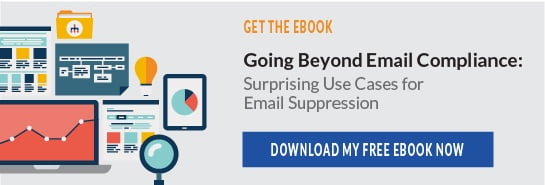Brand protection is on the minds of a lot of advertisers and marketers lately. From advertisements showing up alongside objectionable content to fears about influencers dragging their name through the mud (or whatever messy challenge is making the rounds among YouTubers that week), brands want safety.
But email is a pretty safe communication channel for brands, right?
It can be, as long as you take the right steps to secure your brand reputation.
While affiliate email marketing can bring big returns, it can also introduce safety and security concerns. Fortunately, there are ways to navigate these challenges without hurting your brand. Let’s take a look at a few ways email marketers can reap the benefits of email while protecting their hard-earned brand reputation.
Keep an eye on your CAN-SPAM compliance.
When there are a million other things to consider in an email marketing program, staying CAN-SPAM compliant isn’t always at the top of marketers’ minds. But complacency can be costly. At best, sending email to opt-outs will give prospects a negative perception of your brand; at worst, each email can cost you thousands of dollars.
When you’re sending millions of emails, those fines can add up. It’s important to have a system in place to manage opt-outs. That way, you keep your customers happy, and you honor your unsubscribes well within the 10 days mandated by the CAN-SPAM Act.
Monitor your email partners for optimal brand protection.
If you’re emailing with partners, odds are, you spend time carefully choosing your affiliates or co-marketing partners. But even the most meticulously vetted partners can go rogue. Email partners who abuse your email list can upset customers, leading to email unsubscribes and lost business.
To make sure partners don’t scare off your subscribers, it’s important to have brand protection tools, such as partner monitoring, in place. Solutions like UnsubCentral give email marketers the tools they need to keep an eye on their email partners. By tracking how often partners download suppression lists and watching how many unsubscribes these partners generate, you can keep your brand from falling prey to a bad influence.
Secure your suppression list data.
Speaking of suppression lists, sharing suppression list data with your partners can bring security concerns into your email program if not done correctly. You must make sure all email partners can scrub their lists against suppression files, but sharing raw email data gives emailers access to a slew of nonmailable data.
No brand wants to be synonymous with security issues—especially when data breaches have dominated the news lately—which means you need a way to share this data securely. With a global suppression list management solution, you can house email data in a centralized location without having to give partners access to nonmailable email addresses. When your email data is secure, your email list is happy.
Use suppression lists to send smarter email campaigns.
Finally, suppression lists don’t have to be all about compliance. They can help you be a better email marketer to your list. By using suppression lists to exclude certain segments of your list, you can help make sure that your email communication isn’t turning off your current customers or other parts of your email audience.
For example, if a customer receives an email notifying them of a special offer for new customers, that customer might get a little annoyed at paying a higher rate than incoming customers. Instead of sending an email that will annoy current customers, you can use suppression lists to exclude customers from certain affiliate email campaigns.
UnsubCentral provides tools that email marketers need to ensure that their email marketing program doesn’t undo their hard-earned brand reputation. To learn more, check out the UnsubCentral platform. In the meantime, you can download out 7 Surprising Use Cases for Suppression Lists to learn how your suppression files can help you send better email.


